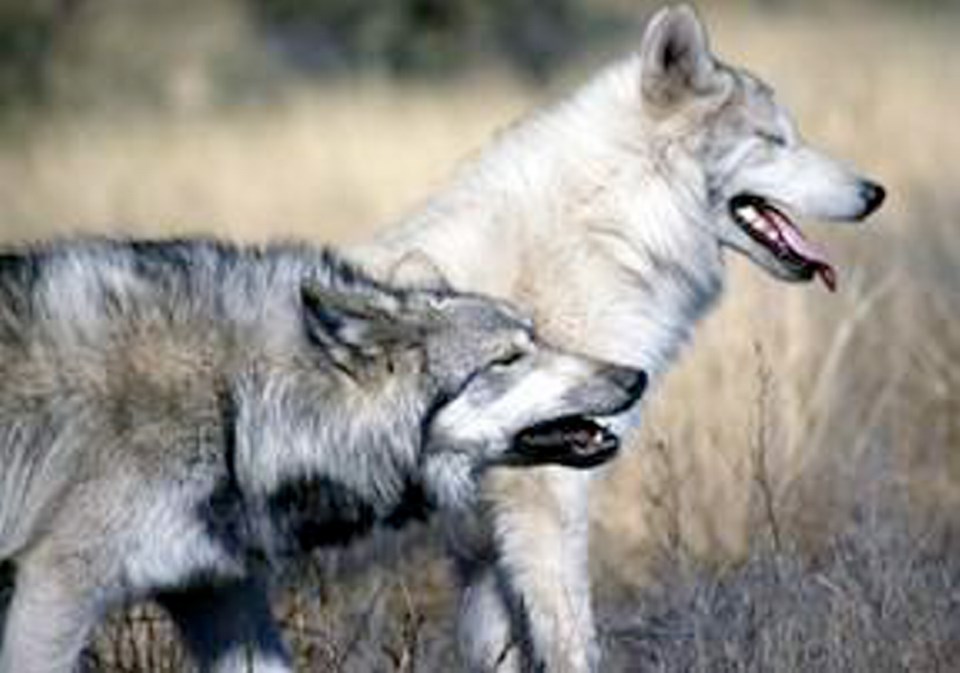Wolves in areas of Canada where they are heavily hunted experience higher levels of stress and reproductive hormones — which could change their evolution — suggests new research from the Sidney-based Raincoast Conservation Foundation.
“Wolves are highly social, like people. What we’re seeing is a disruption to wolf populations in heavily hunted areas beyond just numbers,” said Paul Paquet, a senior scientist with Raincoast and adjunct professor at the University of Victoria. The study is published in the scientific journal Functional Ecology.
The foundation notes wolves in many parts of the country are viewed as threats to livestock and game species, making them subject to poorly managed cull programs that can see up to 50 per cent of a population killed in a year and 90 per cent in some cases.
Researchers used tiny tufts of hair from wolves killed in Alberta’s boreal forest and the tundra and taiga of the Northwest Territories and Nunavut to measure hormone levels. Test wolves showed higher levels of cortisol, progesterone and testosterone in areas of the north where they are more intensely hunted, with higher kills and snowmobile chasing, and in a small area of Alberta where wolves are shot from helicopters to help control endangered caribou populations. In the larger boreal forest, where kills are fewer and traplines are used, the hormone levels were lower.
Paquet said the higher levels of stress hormones could lead to changes in immune systems, disorders and genetic affectations passed down in the DNA. The elevated presence of progesterone, a pregnancy hormone, indicates the stress of being hunted by humans has reproductive effects.
“Usually one or two females in a pack breed, but we’re seeing more females within a pack breeding,” Paquet said. “If there are changes occurring in wolves, we’d expect to see a ripple effect on the [eco-]system.” The study said that although increased reproduction might be viewed as a positive response to population reductions, the implications for lifetime reproductive output and generational survival of offspring compared with undisturbed populations are unknown.
Paquet said part of the inspiration for the research was similar recent studies on humans and post-traumatic stress.
“For us, the major concern is that wildlife management is not just about the numbers. We hope this influences the awareness of other effects that [wildlife] management considers when lethal decisions are made,” said Paquet.
He said the research also has animal-welfare implications. “We wouldn’t do many of the things we do to wolves … to our own pets — especially dogs,” he said.
Chris Genovali, executive director of Raincoast, said he hopes the study influences government practices.
“This study brings the physiological and social impacts of hunting wolves to a new level. We hope it has an impact, especially in B.C., where management is laissez-faire at best and centered on hunting and control,” said Genovali, noting B.C. does not have an accurate count of its wolves, though estimates range from 3,000 to 5,000.
Raincoast Conservation Foundation opposes B.C.’s grey wolf management plan, which was released this spring after a review of more than 2,500 public-input submissions.
— With a file from The Canadian Press



